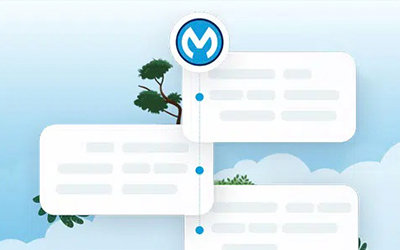We are now several years into the rollout of the Consumer Data Right (CDR) initiative across the banking sector. Initially rolled out to the big four, it now includes the non-major banks. These banks enable consumers to share data from multiple transactions such as home and personal loans, business finance, overdrafts, and account information. The process will start again shortly with the Energy companies and then later with the Telcos.
As with Open Banking, these regulations will create opportunities for existing energy companies to build a closer relationship with their customers through value-adding new services and driving competition by enabling new entrants.
The initial retailers (AGL, Origin, Energy Australia and AEMO) must commence product and customer data sharing in the next few weeks. The next tier, of large organisations, has a 12-month countdown.
Given our experience with Open Banking, I thought it was an excellent opportunity to ask our FINS expert, Adrian Melillo, what lessons the Energy companies (Initial, Large and Small) can learn.
‘Adrian, thinking of your interactions with the big four and some of the smaller banks around Open Banking, what would you say are the three priority considerations the Energy companies should be thinking about now?’
1. Get your foundations right
Firstly, get your foundations right. Use the time now to get the foundations of your systems right for CDR. We recently had a timely reminder about how opening your systems and data up to third-party access can be dangerous. Open the wrong port to the wrong people, and you could have a major data breach. The good news is that you can easily avoid this if your company invests wisely in ensuring your systems are safe, secure, reliable and performant.
You can start with a clear integration strategy to make data available, reliable and verifiable. The strategy may highlight gaps in your technology suite, such as an API management solution, process changes to govern and manage your data, or even new roles in your organisation, such as a Product Owner for the CDR APIs.
2. It is never too early to comply
Second, while there are no penalties for early compliance, there could be for late or non-compliance, as we saw with the Bank of Queensland. While many energy companies may be reluctant to share the data they hold, they will be required to meet their CDR compliance obligations.
You will need to analyse the type and extent of the data required to be made available, assess the readiness of your technology landscape, review data governance practices, and audit security, privacy and identity controls.
For many companies, this will be the first time a third party can access their data. So new capabilities will need to be introduced to enable gateway access, authentication, and consent controls. As this will require effort and investment, the time to start planning is now. Banks that started their planning for Open Banking early and wove it into their existing digital transformation initiatives are benefiting from their readiness to take advantage of the competitive opportunities CDR offers and avoid the wrath of the regulator.
3. Embrace the opportunity for innovation
And finally, embrace the opportunity. While there is an understandable focus on compliance, the lesson from Open Banking is that this is a risky strategy in the medium to long term. CDR drives competition by facilitating new entrants, partnerships and business models. An energy retailer that complies with the regulations risks being outflanked by those who leverage the new data available to improve the customer experience while reducing operating costs.
Businesses should view their investments in capability and innovation programs in the context of the myriad opportunities from the CDR. Doing so will advance their CDR agenda ahead of time and ensure all ongoing investments take advantage of it.
The power of data is already well acknowledged, and leading energy players are engaged in modernising their approach. With more accurate and granular data expected to be delivered by the CDR, there is an immediate opportunity to think about using it not just for uplifting capabilities internally but also to deliver new revenue streams.
‘And so, what would be your advice for the next steps for the Initial and Large Energy retailers?’
Retailers should start with a CDR readiness assessment that reviews their technology and their processes, policies, and people against the proposed energy-specific CDR rules. Create a gap analysis between your current state and these requirements in light of opportunities afforded by CDR. With this gap analysis completed (and externally audited), the focus can shift to creating a CDR response strategy which could include the following:
- A plan for technology-proofing existing systems once CDR is live
- Develop an open-API implementation strategy
- Re-align data-sharing capabilities with internal and external users
- Agree on cross-sector market strategies (and test them)
- Plan for partnerships with new market entrants
- Roll out technology
- Launch enablement activities
‘That’s great advice. Before we close off, any final thoughts?’
Retailers willing to embrace the new regulatory changes can proactively address emerging CDR opportunities and seek first-mover advantage. With defensive, focused innovation, businesses could explore the creation of ground-breaking products and models, intra- and inter-sector partnerships, multi-sector aggregation play, and customer/community-led idea incubation. An approach like this could attract new clients and help reduce costs. As attractive as this sounds, no energy retailer will gain many new clients if they are irresponsible with their client’s data. Don’t delay; get your action plan in place to ensure that you meet your regulatory requirements and the lofty standards of the customers you want to keep.
MakeSense specialises in providing tech solutions for companies in the Utilities sector, including Energy companies. For more information, visit our page on Integration and Automation Services for Utilities.








